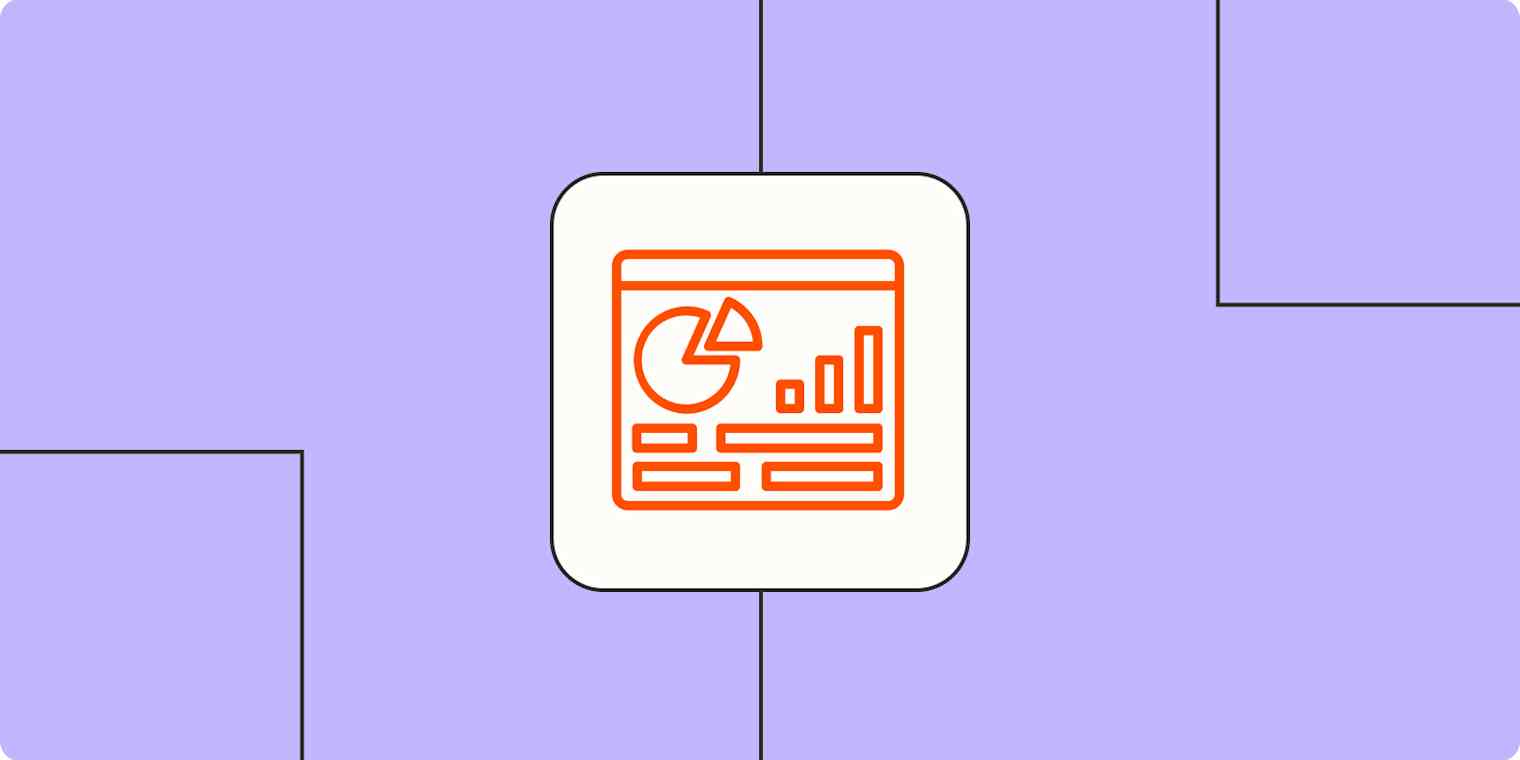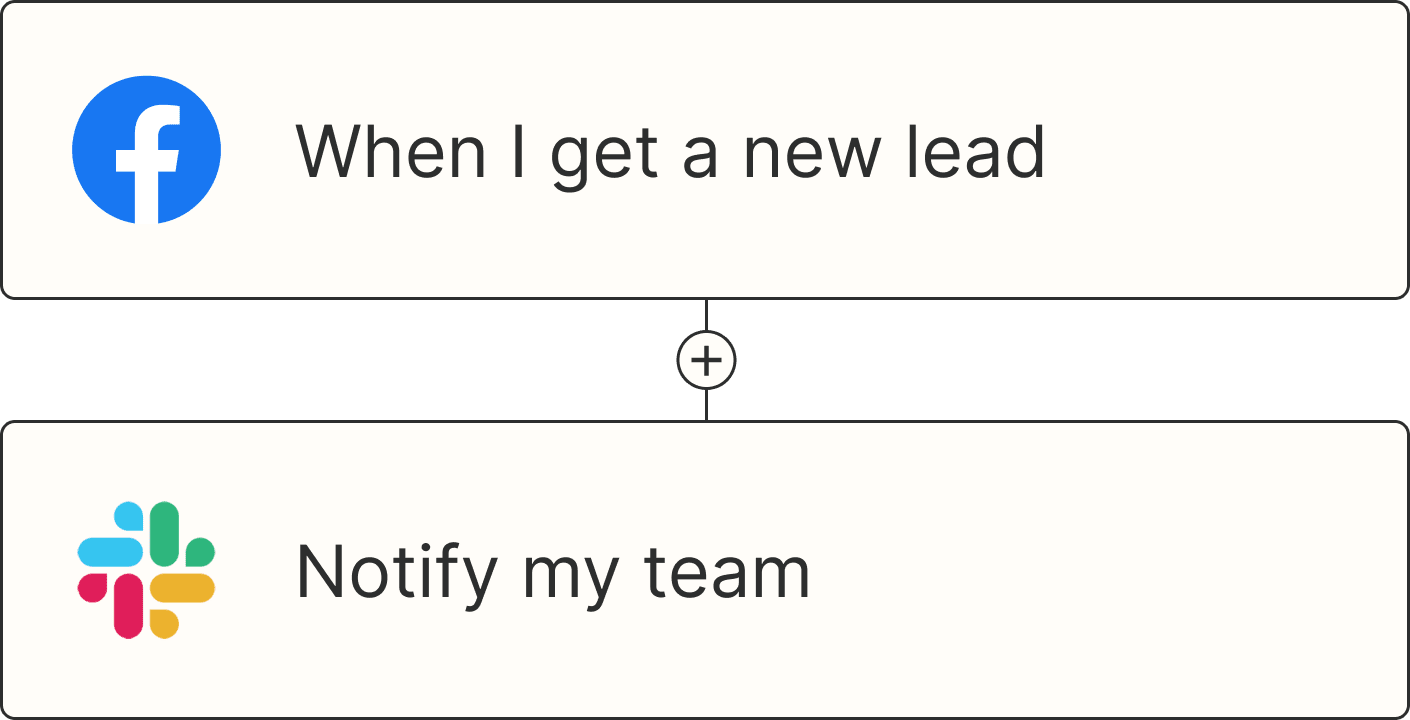Someone in my network once told me they accidentally triple-invoiced a single client for the same deliverable. Triple invoiced, and all because sales never updated their customer relationship management system to show they'd closed and onboarded that lead.
So, every time the deal record moved from "open proposal" to "close" in the CRM, accounting auto-sent a new invoice via its enterprise resource planning tool. What looked like a record-breaking sales month turned out to be a data blunder—plus one very confused (and annoyed) customer.
When two or more systems run without proper oversight and organization, your data becomes the Wild West. But master data management (MDM) can put a stop to all that chaos, and you don't have to overhaul your entire business to achieve it. All you need is a clear strategy and a tool like Zapier to connect the dots. Here's how to bring order to your master data.
Table of contents:
What is master data management?
Master data management (MDM) establishes and maintains a single, accurate source of truth for your core business data.
Think of MDM as a referee for your information systems. Without it, every department plays by its own rules—like using different habits for inputting or updating records—and calls their own fouls, such as deciding for themselves whether a customer entry meets CRM data quality standards.
But with MDM acting as a referee, everyone follows the same rulebook to ensure data records and data management workflows meet standards.
To understand what specifically needs governing, I like to categorize business data into two main categories: organizational data and master data.
Types of organizational data
Enterprises deal with enough data to hit Google Sheets' 10 million cell limit on a weekly basis. Here are the most common types:
Unstructured data: Messy, free-form stuff that can't be easily organized or analyzed without some cleanup or reformatting (emails, PDFs, blogs, social media content, videos, etc.)
Semi-structured data: Data with some formatting (like tags or labels) that's still not quite ready for analysis (JSON files, HTML, XML, etc.)
Structured data: Highly organized information that's immediately ready for analysis (formatted Excel sheets, CRM contact tables, SQL databases, inventory lists, etc.)
Transaction data: Your operational history—think sales invoices, purchase orders, shipping logs, support tickets, and other event records
Metadata: Data about your data, such as when a file was created, who created it, and where (geo-location tags)
Master data: Core reference data: customer records, employee details, supplier details, and other information that provides context for every business activity.
Common master data types
As the name suggests, MDM centers on master data. Master data is technically a type of organizational data, but you can divide it into several key categories. Common types include:
Customer data includes names, contact info, account details, and buyer history. Sales, support, and marketing can use it to personalize engagement and resolve customer issues efficiently.
Product data consists of stock keeping units (SKUs), product descriptions, pricing, inventory levels, and suppliers. It keeps warehouse, logistics, and operations teams aligned on what's in stock, what's shipping, and what's selling.
Supplier/vendor data provides details about your business partners and supply chain—think company names, contacts, payment terms, catalogs, service capabilities, etc. Procurement and finance teams rely on this info to keep the supply chain intact and ensure products and services are delivered on time (and within budget).
Employee data provides information about your staff, their roles, and compensation. HR uses these details to manage hiring, onboarding, offboarding, and payroll.
Asset data covers serial numbers, location, maintenance history, and usage of equipment and property. Facilities and operations teams lean on this data to manage and maintain high-value assets.
Reference data offers standardized codes and classifications—such as country codes, product categories, and currency types—to categorize your other data. Everyone needs this info to keep data consistent and allow different systems to share information (like a CRM and ERP) in proper formats.
How master data works with transaction data
To get the most from master data, it must work in tandem with transaction data. One bike, two seats. Transaction data answers the question "what happened," (like a closed deal sale on May 25th), while master data answers "who," "what," and "how much" (a one-year subscription of IT services to Ace Business Development, LLC for $1,200 per month). Try riding with just one, and you won't get far.
Why master data management matters
I often hear business leaders say, "We've always done things this way, and it works just fine." But are things really fine? Bad data is a silent killer, with poor quality and other data issues costing organizations an average of $12.8 million annually.
But because losses aren't always as clear as a churned customer or a line item in your expense report, many teams brush data issues aside. It matters, and here's why.
Preserves data accuracy
Everyone needs to work with the same set of facts. Remember the example I gave of the triple-invoicing? If sales could automatically update their leads record in the CRM after a closed deal, other reps wouldn't keep re-adding it to the pipeline.
Ensures automations function correctly
Accurate data ties into MDM for record linkage and automated workflows. The triple-invoicing issue happened because the CRM failed to communicate with the ERP system. When MDM bridges that gap, each tool knows exactly which customer, deal, or action it's working with so your automations actually do what they're supposed to.
Supports compliance objectives
We can't talk about data without also talking about compliance. That next audit becomes much easier to manage when your MDM strategy provides accurate information and a clear paper trail to back it up.
Supplies better data for insights
Good data helps you make smart decisions. If your records are outdated or duplicated, it's impossible to find bottlenecks or know where to invest resources. MDM gives you one definitive source of truth for better insights and smarter decisions.
How to create a master data record
Going from data padawan to master doesn't happen overnight. But it starts with knowing your information requirements, consolidating current records, and then doing a little data spring cleaning. Since most companies use a CRM, I'll use creating a master customer record as an example as we walk through these steps.
1. Identify data sources
Find every database that holds customer data (and should be holding it). Your CRM is an obvious starting point, but other systems include billing software, email marketing tools, your support desk, and even stray Google Sheets or Excel files. Once identified, log these databases into a central register, noting the system name, types of data stored, and which teams are responsible for it. We aren't actually integrating the data yet, just making a list of all the databases we need for MDM purposes.
If you've got an extensive tech stack, devote a bit of extra time to this step to ensure you've turned over every stone. Missing even one data source can undermine your entire MDM game plan.
2. Define data fields and properties
Decide what a standard "customer" record should look like. Are there essential fields like name, email, billing address, and phone number you must have? How about information you'd like to track: deal value, contract duration, or specific products sold?
Additionally, construct properties—these are the specific attributes or characteristics you assign to each data field that control how information is displayed, entered, and used. Two companies might monitor customer status (user, repeat customer, churned, etc.) but use different statuses and formats (dropdown, checkbox, tag, etc).
3. Consolidate and cleanse
Now, you'll need to integrate data from all your sources and bring it together in a unified view. You can use a purpose-built data integration tool to automate this process, and avoid manually copying and pasting row after row (after row) of records.
And if you're not a database management whiz, use a no-code tool like Zapier Tables, which lets you store and move data to any source of truth, then automate flows between systems in just a few clicks. Save time and energy by recognizing the same entity across departments and software systems so there's no disconnect between teams.
This is also the time to standardize formats. Go record-by-record, correct misspellings, and make sure there's universal structuring (like whether addresses say "Street" or "St."). Also, enrich your data and ensure all records are up-to-date.
Take your "data mastery" even further with automated data management through Zapier. Rather than enriching and cleaning records manually, you can set up workflows with AI agents that monitor your source systems for new or updated information.
4. Deduplicate records
Make your data even cleaner by finding and consolidating any duplicate records. Two deals labeled "PK Cyber Solutions: office supplies" and "PKCS: paper, folders, and printing" are likely referencing the same opportunity. Combine them into a single, authoritative master record.
Some databases will auto-spot potential duplicates, then let you combine them with one click. But as a rule, you should lean on AI and automation tools to handle this step for you.
5. Distribute and adjust
Now you've got a new, clean, "golden customer record" in your central register (like a Zapier Table), ready to be imported to your CRM and broader tech stack. First, ensure it's backed up into the systems you established, then you can configure it to each team's information needs.
When you share the record with your billing software, for example, include the accounting details that matter most, like invoicing dates, net payment terms, and payment method.
Master data management roles and responsibilities
MDM is a team sport that calls for a mix of technical skill, data fluency, and clear ownership. Here's who you'll want to be involved and what their role should be under the DARCI project management framework.

Role | Responsibilities | DARCI role | Potential job title(s) |
|---|---|---|---|
MDM program owner | Oversees the MDM efforts, fights for the budget, delegates tasks, and monitors progress (and takes the fall if things go sideways) | Driver | Chief Data Officer, Head of Data Strategy, IT Director |
Data steward | Calls the shots on "truth," makes the rules on specific data types (like "customer" or "product") and properties, and settles definition debates | Responsible, Consulted | Product Owner, Chief Analytics Officer, Director of Business Intelligence |
Business lead | The "voice" of the user who translates business needs into technical MDM solutions | Responsible, Consulted | Business Analyst, Data Product Manager, Solution Architect |
Technical lead | Builds and maintains data pipelines, implements MDM tools, and makes sure the technology works the way users expect | Responsible | IT Manager, IT Specialist, Data Engineer |
Data quality specialist | The QA wizard on the front lines removing duplicates, correcting errors, and ensuring the steward's rules are followed to the letter | Responsible, Informed | Data Quality Manager, Data Operations Manager |
Master data management solutions
I'm a broken record at this point, but integrating and automating your data sources is the foundation of solid MDM. Good news: there are plenty of apps that can help you do this by uniting your data into a single, centralized view.
Zapier: The best choice if you don't want to deal with the strictness and cost of a dedicated MDM tool. Zapier integrates data across systems into any source of truth, builds master records, and syncs them between all the apps in your stack—no technical background required.
Informatica MDM suite: An enterprise-grade heavyweight built for large, global data environments. It uses AI automation to power most of its data management services.
IBM InfoSphere Master Data Management: Think of this as IBM's Swiss Army knife for data management. It's a strong choice if you already work in the IBM ecosystem and need robust governance for regulated industries like finance and healthcare.
SAP Master Data Governance: The go-to option for SAP users. It delivers pre-built governance tools tailored for SAP data without the integration headaches.
Oracle Enterprise Data Management: Focuses on managing master data across Oracle Cloud applications through a single control center.
Microsoft Master Data Services: A natural fit for SQL Server loyalists. It's relatively cost-effective and keeps your MDM processes firmly inside the Microsoft universe.
Talend Data Fabric: One of the most flexible, modular options on this list. It excels at cleaning, integrating, and managing master data across diverse toolsets.
Master data management best practices
Now that you know what MDM is and how to start doing it, you should also know how to do it well. MDM is pretty much always a net positive for businesses, but you'll get even better results if you follow these tips:
Prioritize where you need MDM the most: You can't overhaul all your business data overnight. Start with the master data domain causing the most headaches, such as customer data for sales or inventory data for operations and logistics.
Data governance is data cleanliness: Set clear policies for who owns the data, who's allowed to update it, and what the standards are for formatting, validation, and completeness. Document these policies and make them accessible to every stakeholder.
Make data quality management the default: Deploy data quality processes directly into workflows as non-optional steps. For example, require automated validation so users can't submit or change records without meeting formatting and completeness standards.
Not all MDM solutions are made equal: Determine whether a dedicated MDM platform or no-code data automation solution (like Zapier) makes more sense for your business. If you choose a purpose-built MDM, make sure it fits your data's size, scope, and tool stack. And remember, enterprise apps often come with enterprise-level pricing.
Integrate, refine, repeat: Use Zapier to connect all your apps so data flows automatically between tools. Build automations that validate, deduplicate, and enrich data as it enters your systems. Then, review and refine your setup over time. Get started with one of these pre-built data management templates.
Orchestrate your data with Zapier
You don't need a massive IT budget or a team of engineers to start mastering your data. Think of Zapier as your organization's central hub for data connectivity—the place where every data rail meets and runs on schedule.
More than just a data management app, Zapier is an enterprise AI solution for automating data orchestration. That means uniting and managing every data workflow, system, and tool in your organization from one platform.
Pull records from any source into a central database, use AI agents for formatting and standardization, then feed that data seamlessly back into the CRMs, customer support software, and predictive analytics apps your teams use every day (plus over 8,000 other apps).
Related Reading:








